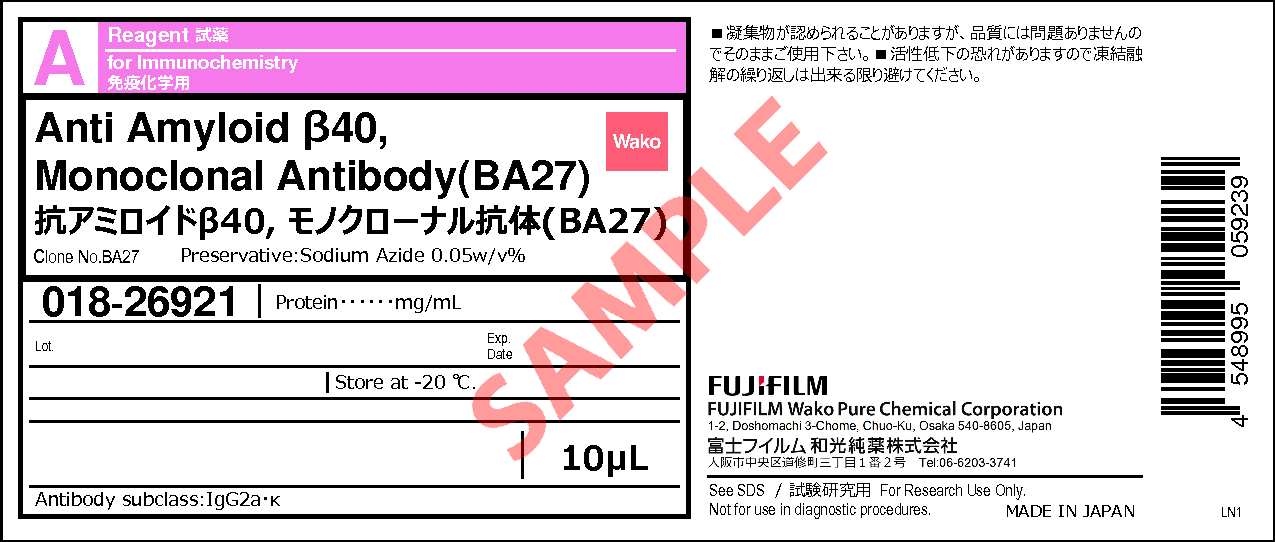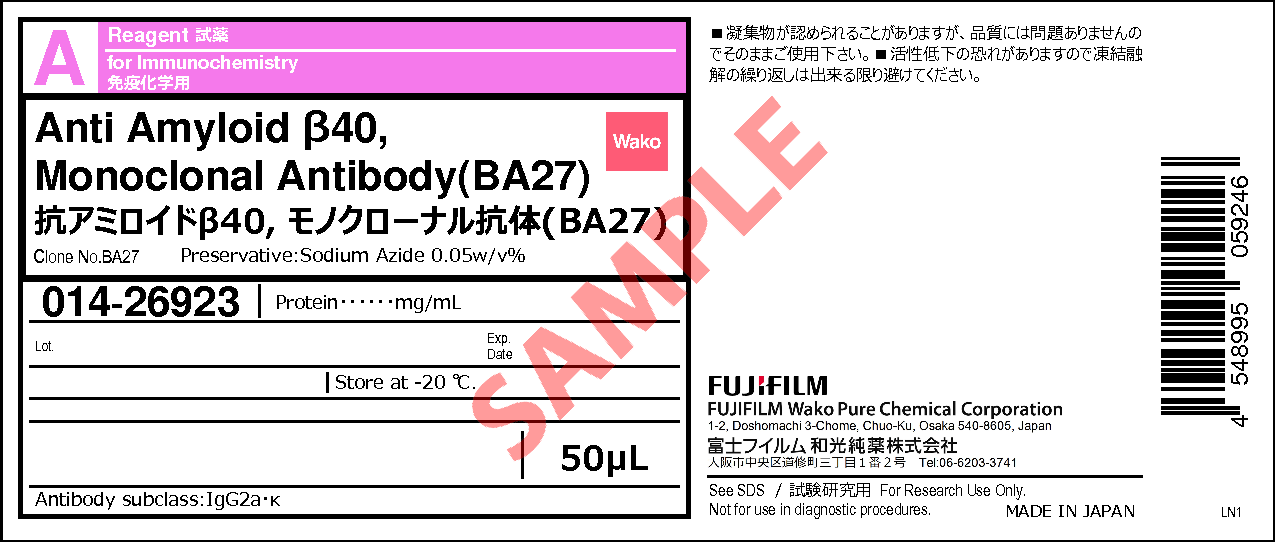Anti Amyloid β40, Monoclonal Antibody(BA27)
- for Immunochemistry
- Manufacturer :
- FUJIFILM Wako Pure Chemical Corporation
- Storage Condition :
- Keep at -20 degrees C.
- Source :
- Human
- Cross‒Reactivity :
- Human, Mouse, Rat
- Host :
- Mouse
- Clone No. :
- BA27
- Classification :
- Monoclonal
- Application :
- WB(1:100 - 1,000), IHC(1:500 - 5,000), ELISA(1:100 - 1,000)
- Structural Formula
- Label
- Packing
|
Comparison
|
Product Number
|
Package Size
|
Price
|
Inventory
|
|
|---|---|---|---|---|---|
|
|
|
10uL
|
|
||
|
|
|
50uL
|
|
In stock in Japan |
Document
Overview / Applications
| Outline | This product is for research use only. Do not administer it to human. Amyloid β(Aβ) is a peptide which consists of about 40 amino acids. Aβ is considered the cause of Alzheimer's disease, because it is a major component of senile plaques formed in brains of Alzheimer's disease patients. Aβ has several types differing in lengthe of the amino acid. The main types are Aβ 40 (40amino acid), Aβ 42 (42 amino acid), and Aβ 43 (43 amino acid). This item is a mouse monoclonal antibody that specifically reacts with Aβ 40. The antibody was developed by Takeda Pharmaceutical Company Limited. [Reactivity] Reacts with Amyloid β 40. [Antigen] 1-40 a.a of human Amyloid β [Species cross reactivity] Human, Mouse and Rat [Clone No.] BA27 [Host] Mouse [Isotype] IgG2a·κ [Purification] Protein A-affinity purified [Concentration] Indicated on the lable [Formulation] PBS with 0.05% Sodium Azide |
|---|
Property
Antibody Information
| Antigen | Amyloid β (aa1-40) |
|---|---|
| Antigen Alias | β Amyloid 1-40 Amyloid β 1-40 Amyloid Beta (1-40) b-Amyloid (1-40) Abeta 40 (beta amyloid 1-40) Amyloid β (aa1-40) |
| Subclass | IgG2a,k |
| Labeling | Unlabeled |
Manufacturer Information
Alias
- Anti-β Amyloid(40), Mouse Monoclonal Antibody(Clone No. BA27)
Anti-Aβ(40), Mouse Monoclonal Antibody(Clone No. BA27)
For research use or further manufacturing use only. Not for use in diagnostic procedures.
Product content may differ from the actual image due to minor specification changes etc.
If the revision of product standards and packaging standards has been made, there is a case where the actual product specifications and images are different.





